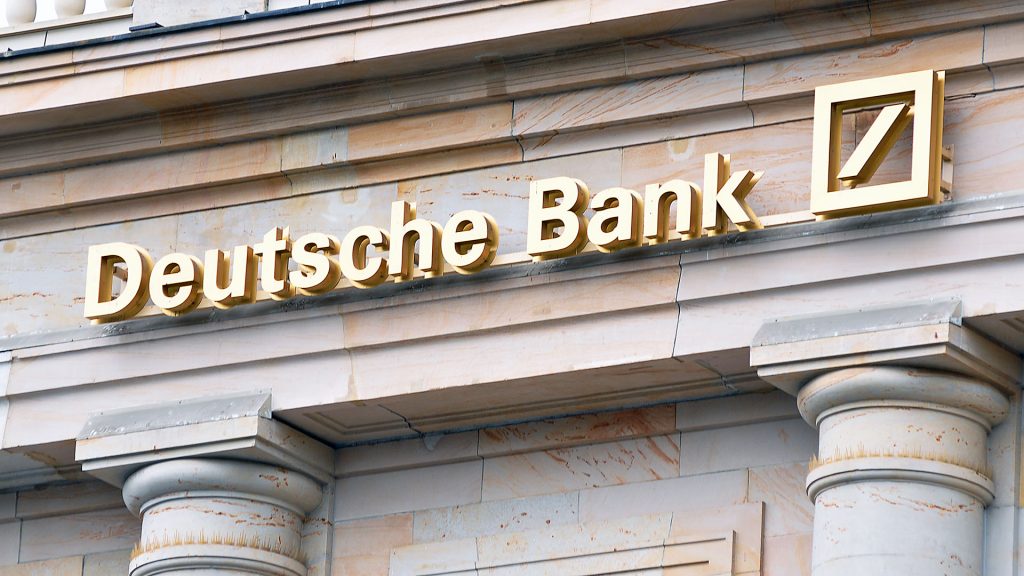Key Takeaway
After having to contend with three years of losses, online breadcrumbs reveal a turnaround strategy for Deutsche bank that includes appointing a new CEO, restructuring costs via redundancies, investing more in graduate recruits, refinancing and trading debt in India.
Key information about a company’s future strategic moves can be gathered via real time external data. For some, like PE firm Abraaj, the breadcrumbs suggest a coming demise. For others, they indicate a significant shift in strategy. Following a period of loss, indicators suggest Deutsche Bank is exploring new avenues of revenue generation and other restructuring strategies. Looking out at online breadcrumbs, competitors and stakeholders in the business can gain an understanding of the bank’s next steps as it looks to to turn its business around.
According to Bloomberg, the Frankfurt-based firm has engaged in thousands of job cuts during a global restructuring, while focusing efforts in the Asian market. We looked into the trail of breadcrumbs that indicates what might be next.
Tapping into debt financing in India
New bankruptcy laws in India have fuelled efforts to restructure $210 billion in stressed assets. Indian banks will most likely be subjected to declining profits in the coming quarters, following the widespread reforms around problematic assets.
The new rules on bad debt resolution implemented by the RBI in March 2018 indicate that banks can no longer take solace in loan restructuring schemes to delay the recognition of non-performing loans (NPLs). Banks in India hold large amounts of restructured loans, many of which are set to become NPLs in the coming quarters, following the reclassification. Subsequently this will result in the rise of bad loan ratios that will hopefully stabalise in the future.
Uday Kotak, chairman and managing director of Kotak Mahindra Bank in India, in aninterview with Bloomberg, highlighted that the new laws will stop unlawful loans, attempt to overhaul India’s bankruptcy laws, and recapitalise state-owned banks. The laws will also lift a burden off Indian banks, and encourage foreign lending, thereby substantiating the country’s economic growth.
Speculators are thus flocking to India to sieve through the wreckage of bad debt financing. Deutsche Bank is taking its share of the pie, hoping to generate massive returns on the banking sector’s worsening bad debt burden by possibly offering debtor-in-possession funding, structuring equity and debt financing.
Deutsche Bank’s Asian credit exposure is primarily in India, which accounts for the second biggest share of the bank’s profits in the region. According to Deutsche Bank’s 2017 annual report, as of December 2017, the bank saw 15.2 billion euros ($17.7 billion) of credit risk exposure (lending commitments and traded bonds and debt) in India, comprising 16% of the total across Asia Pacific markets.
The bank hopes to team up with other firms in order to arrange for sufficient funds to finance Indian debtors. Amit Khattar, Asia-Pacific co-head of global credit trading,says, “It’s looking for partners to offer debtor-in-possession funding— which can keep a business operating during bankruptcy proceedings—as well as for structuring equity and debt financing for companies before they slip into difficulty.”

Bringing in a new CEO
Christian Sweing was recently named the new CEO of Deutsche Bank, replacing John Cryan, who was unable to deliver annual profits for the last three years under his tenure.
This new announcement saw share prices rise 3%, but the increase will be of little solace to investors who have had to live with a loss of around 50% since Cryan was appointed CEO in 2015.
The poor performance of the bank reflected concerns about the strategic direction and execution of a turnaround strategy, which saw thousands of job cuts and branch closures. Despite the changes, it failed to turn a profit in the past three years. Questions remain about the future of the lender’s investment banking operation, which delivers unpredictable returns, and has fallen far behind the other Wall Street rivals.
As of 2017, corporate and investment banking made up 54% of the bank’s total revenue, but the business has been faced with scandals and tougher implications attributed to the global financial crisis. Bonuses have also been severely criticized by German politicians.
The new CEO’s stern plans on the bank’s future focused heavily on the importance of abiding with cost reduction targets, and non-tolerance to meeting cost and revenue targets. Sewing also hinted at reevaluating the banks position in the market and further adapting to revenue, cost and capital structure.
Restructuring human resources and cost cutting
Faced with recurring losses over the last few years, Deutsche bank has been lagging behind its contemporaries. In an effort to stabilise its business, the bank has engaged in stringent restructuring and cost cutting via job cuts.
Deutsche bank has initiated restructuring plans that will see the elimination of around 7,000 jobs, bringing its full time staff of 97,000 down below 90,000 by 2019, primarily in the equities sales and trading business, as reports suggest.
Furthermore, according to Business Insider Deutsche Bank is also hiring 810 new graduates globally in 2018 – 25% more than they did in 2017. This likely indicates that more senior level staff will be let go to make room for the new grads during the restructuring exercise.
The bank’s focus on graduate hires comes after Peter Selman, Deutsche’s head of global equities, told Bloomberg earlier this year that the plan was to “focus a lot on graduate recruiting” rather than “a lot of very high-priced, expensive lateral hires.” Nonetheless, it looks like corporate finance is the biggest beneficiary of the graduate binge.
Alternatively, online breadcrumbs suggest that the overall pool of graduate hires in the technology department have in fact been reduced. Whilst banks like Goldman Sachs and J.P.Morgan are investing substantially in technologists and STEM graduates, Deutsche Bank’s intake of junior technologists reduced to 177, a 4% drop since the previous year, starkly opposing the trend in innovation efforts seen among the bank’s competitors.
“[We're focused] a lot on graduate recruiting,” rather than “a lot of very high-priced, expensive lateral hires.”
Profitability going forward
Last week, the bank reported a net profit of 401 million euros ($468 million) for the second quarter, down 14% from the previous year, in line with what analysts signaled earlier.
CEO Christian Sewing said: “In the second quarter we accelerated the reshaping of our bank significantly and proved the resilience of our global business. We’re making important changes to our core businesses as promised, we’re headed in the right direction on costs, and our balance sheet quality is strong.”

In a report last year, McKinsey highlighted key potential risks for banks such as Deutsche, which it named the “four horsemen of the e-pocalypse.” They include disintermediation, unbundling, commoditization and invisibility. In the coming months and years, we’ll see the biggest players in this historical space carve our their strategies for remaining relevant during the current technological and data revolution. Those looking to gain an edge over the rest will be carefully watching the online breadcrumbs they leave behind to determine what those strategies are.
From hiring patterns and anomalies, to cost cutting strategies, investments in particular departments and geographic focus, insights from external data can help investors and other stakeholders understand how banks are working to stay relevant as they continue to face threats from competitors, tech giants and startups alike.

